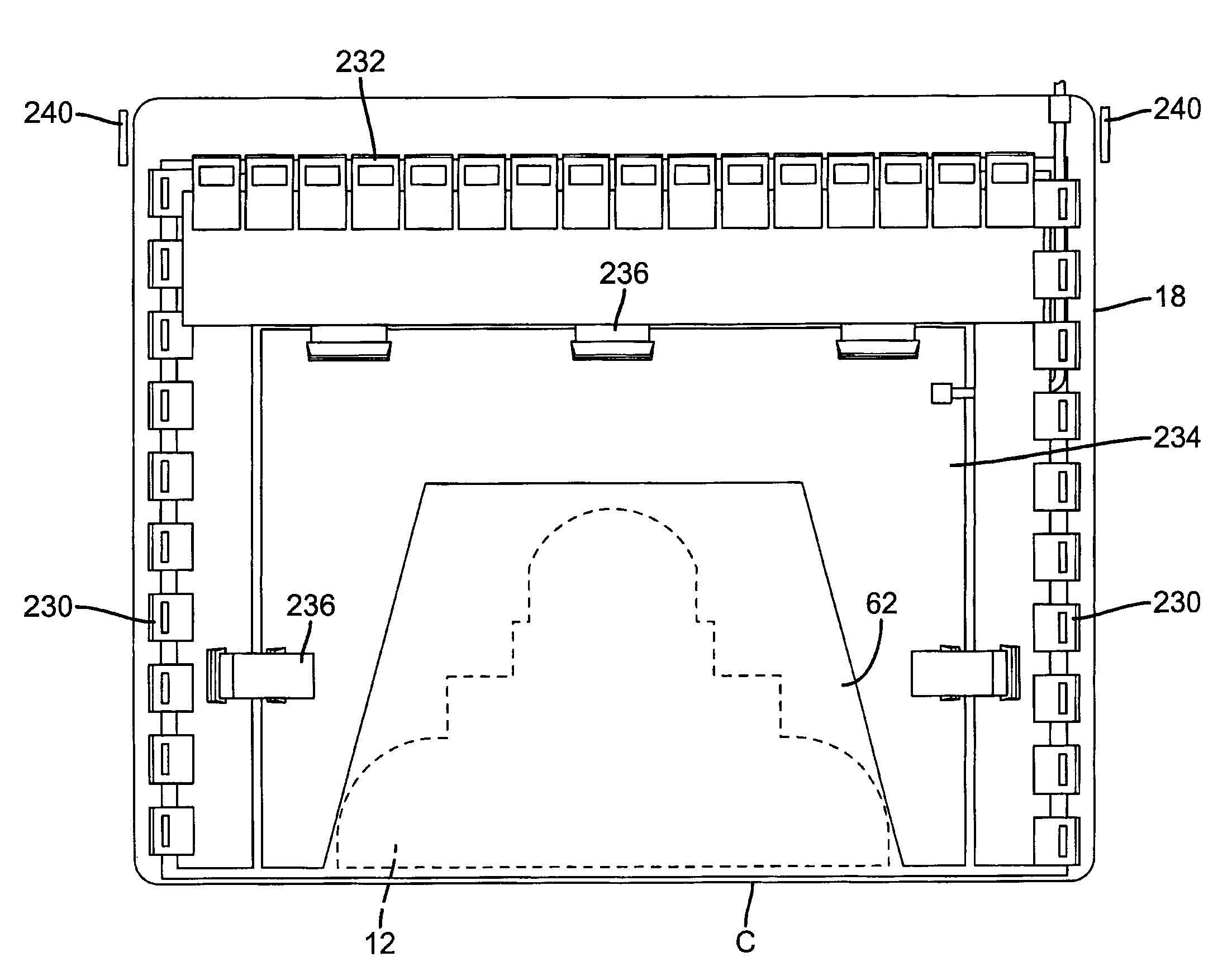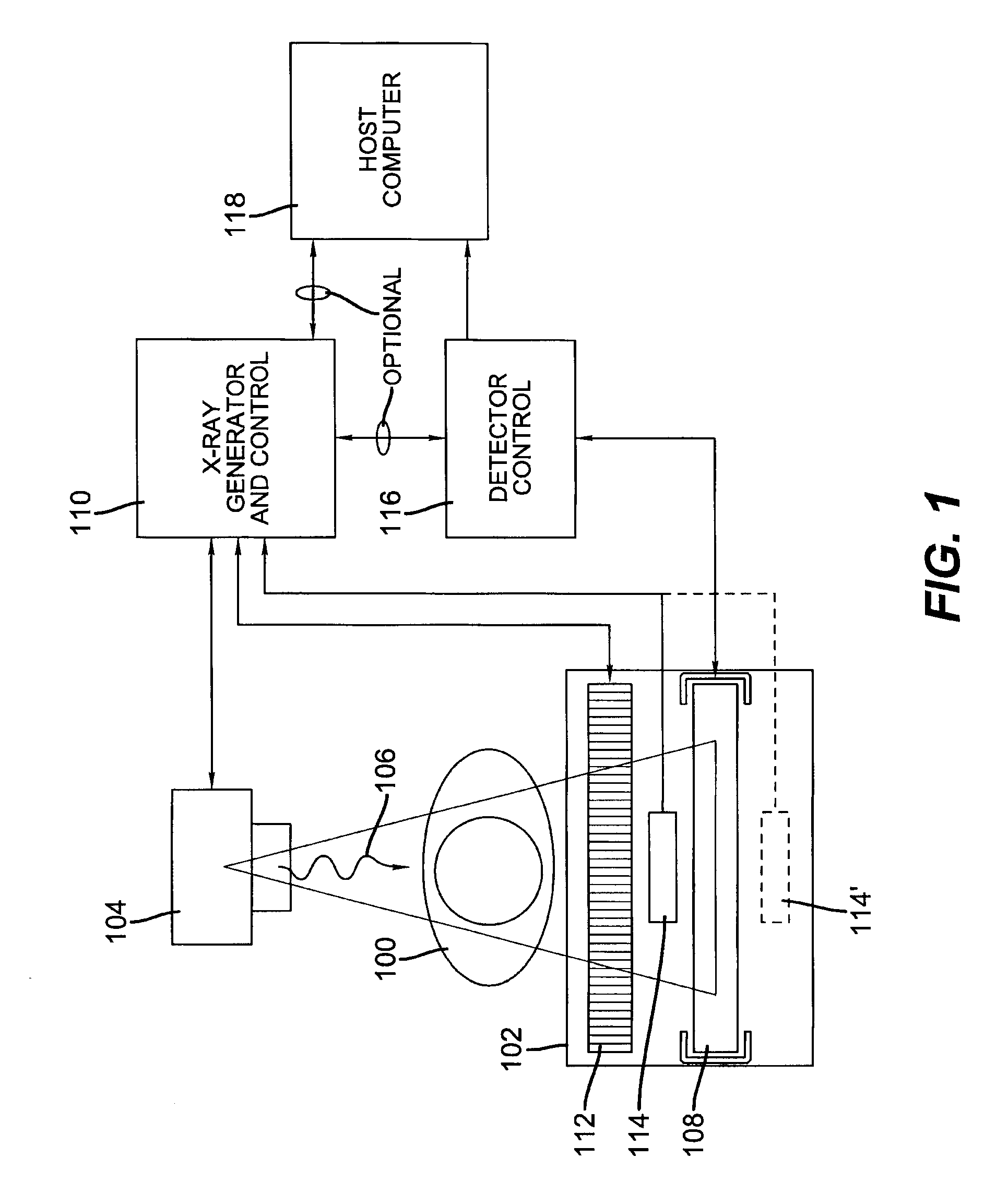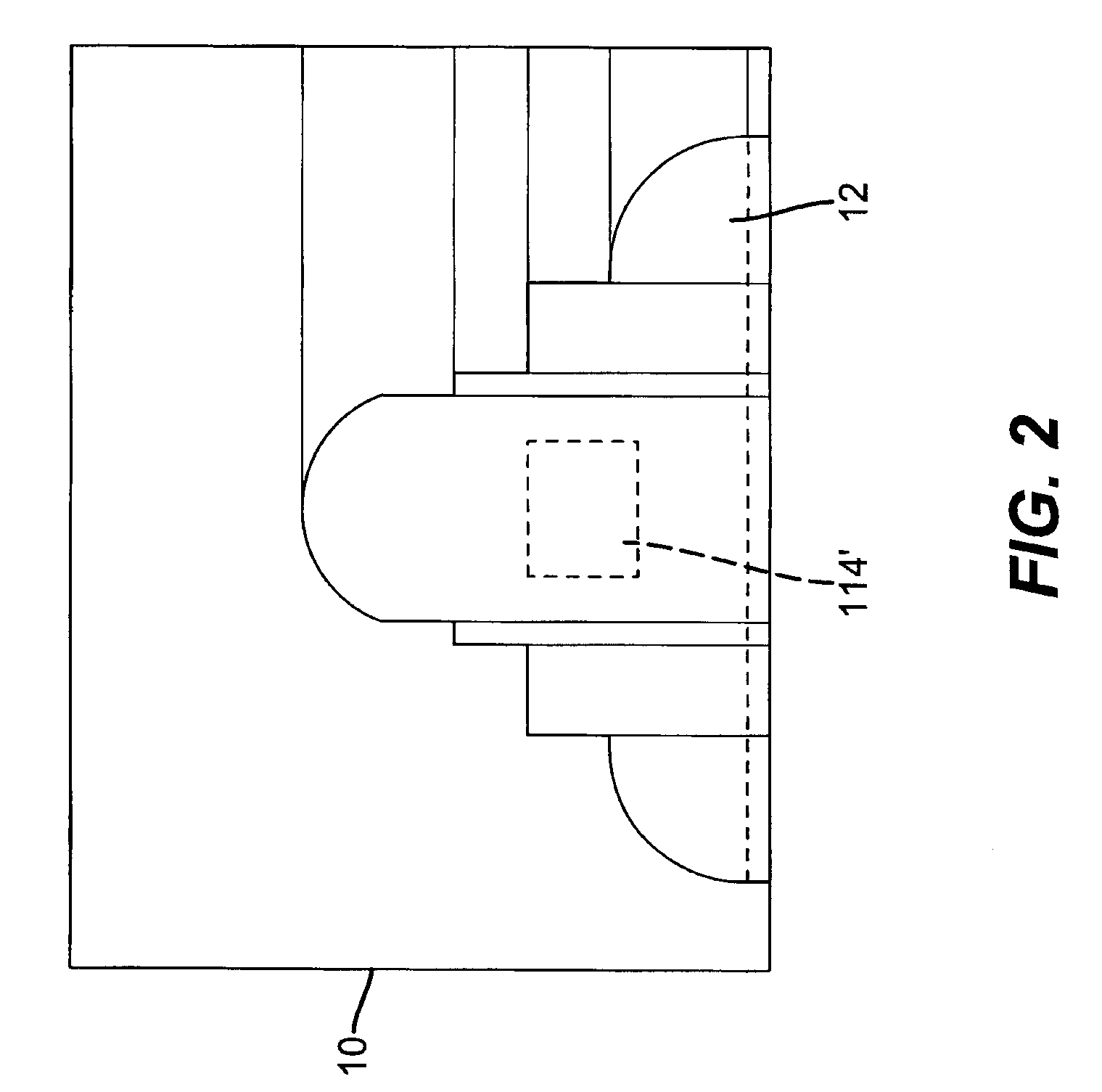Retrofit digital mammography detector
a digital and detector technology, applied in the field of medical imaging systems, can solve the problems of chemical or thermal processing, delay in obtaining diagnostic images, and difficulty in providing radiographic images outside of immediate medical facilities
- Summary
- Abstract
- Description
- Claims
- Application Information
AI Technical Summary
Benefits of technology
Problems solved by technology
Method used
Image
Examples
Embodiment Construction
[0041]The following is a detailed description of the preferred embodiments of the invention, reference being made to the drawings in which the same reference numerals identify the same elements of structure in each of the several figures.
[0042]Referring now to FIG. 1, there is shown a typical projection X-ray apparatus used in an X-ray examination room. As shown, a patient 100 is positioned on a support 102. An X-ray source 104 projects X-rays 106 through a body part of patient 100 to form a radiographic image of the corresponding anatomy, which is detected by a digital detector housed in a radiography cassette 108 mounted in support 102. X-ray source 104 is activated and controlled by an X-ray generator and control 110. Support (Bucky) 102 can also house an antiscatter grid 112. An auto exposure control (AEC) sensor 114 can be positioned in the path of X-rays 106, prior to radiography cassette 108. Alternately, as is generally practiced for mammography, an auto exposure control (AE...
PUM
 Login to View More
Login to View More Abstract
Description
Claims
Application Information
 Login to View More
Login to View More - R&D
- Intellectual Property
- Life Sciences
- Materials
- Tech Scout
- Unparalleled Data Quality
- Higher Quality Content
- 60% Fewer Hallucinations
Browse by: Latest US Patents, China's latest patents, Technical Efficacy Thesaurus, Application Domain, Technology Topic, Popular Technical Reports.
© 2025 PatSnap. All rights reserved.Legal|Privacy policy|Modern Slavery Act Transparency Statement|Sitemap|About US| Contact US: help@patsnap.com



